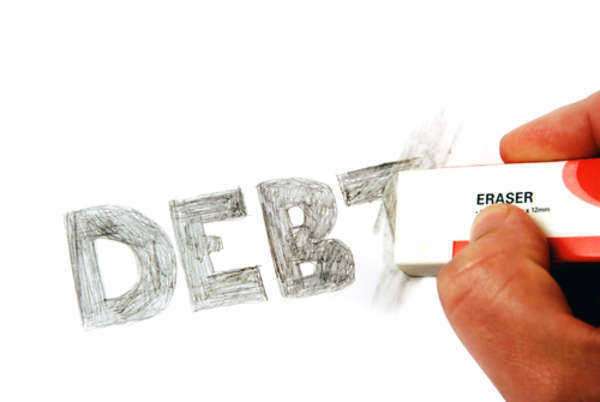
Debt can be a significant burden on individuals and households. It can be challenging to manage, and without proper planning, it can lead to financial distress. Fortunately, there are many resources and tools available that can help individuals manage their debts. One such tool is a debt calculator. In this article, we will explore what a debt calculator is, how it works, and how to use it.
What is a debt calculator?
A debt calculator is a tool designed to help individuals calculate and manage their debts. It is a software application that allows users to input information about their debts, such as the total amount owed, interest rates, and repayment terms. Based on this information, the calculator will generate a report that shows the total amount of debt, monthly payments, and the length of time required to pay off the debt.
How does a debt calculator work?
Debt calculators typically work by performing several calculations based on the information provided by the user. These calculations include the total amount of the debt, the monthly payment required to pay off the debt, and the length of time required to pay off the debt. Some calculators may also take into account additional factors such as interest rates, late fees, and penalties.
To use a debt calculator, users typically input the following information:
• Total amount of debt owed
• Interest rate(s) on the debt
• Length of time (in months or years) to pay off the debt
• Minimum monthly payment required
Users may also be able to input additional information, such as any fees, late charges or other penalties.
Once the user has entered all the necessary information, the debt calculator will generate a report that shows the total amount of debt, the monthly payment required to pay off the debt, and the length of time required to pay off the debt.
Understanding debt calculators
Debt calculators can be a powerful tool for managing debts, but they can also be confusing if you don’t understand what they’re telling you. Here are some key terms and calculations to keep in mind when using debt calculators:
• Total amount owed: This is the total amount of money you owe on all your debts combined. It includes the principal amount of the debt plus any interest, fees, late charges, or other penalties.
• Interest rate(s): Interest rates are the fees charged by lenders for borrowing money. They are usually expressed as an annual percentage rate (APR) and can vary depending on the type of debt, the lender, and the borrower’s creditworthiness.
• Monthly payment: This is the amount of money you must pay each month to pay off your debts over time. It includes both principal and interest.
• Length of time: This is the amount of time it will take you to pay off your debts if you make the minimum monthly payment. It is usually expressed in months or years.
• Minimum monthly payment: This is the lowest amount you can pay each month to avoid defaulting on your debts. It is typically a percentage of the total amount owed or a fixed amount set by the lender.
Using a debt calculator
Now that you understand what a debt calculator is and how it works, let’s look at how to use one.
Step 1: Gather all your debt information
The first step in using a debt calculator is to gather all the necessary information about your debts. This includes the total amount owed, interest rates, repayment terms, and any additional fees or charges. You can typically find this information on your most recent billing statement or by contacting your lender directly.
Step 2: Choose the debt calculator
There are many debt calculators available online, so you’ll need to choose one that works best for your needs. Look for a calculator that includes all the necessary fields that correspond to the information you gathered in Step 1.
Step 3: Enter your debt information
Once you have selected a debt calculator, enter all your debt information into the appropriate fields. Be sure to double-check the accuracy of your entries before proceeding to the next step.
Step 4: Generate the report
After you have entered all your debt information, click the button that generates the report. The calculator will perform the necessary calculations and generate a report that shows the total amount of debt, the monthly payment required to pay off the debt, and the length of time required to pay off the debt.
Step 5: Review the report
Review the report carefully to make sure you understand all the information it contains. Pay special attention to the monthly payment required to pay off the debt and the length of time required to pay off the debt. If you find that the monthly payment is too high or the length of time needed to pay off the debt is too long, you may need to re-evaluate your budget and consider other options for managing your debts.
Government resources on debt management
The government provides many resources that can help individuals manage their debts. Some of these resources include:
• The Consumer Financial Protection Bureau (CFPB): The CFPB is a federal agency that provides information and resources on financial products and services, including debt management.
• The Federal Trade Commission (FTC): The FTC enforces federal consumer protection laws and provides information on debt management and other financial topics.
• The Department of Education: The Department of Education provides information on student loan debt and offers repayment plans and other options for managing student loan debt.
• The Department of Housing and Urban Development (HUD): HUD provides information and resources on housing counseling, including debt management.
Conclusion
Debt calculators are a valuable tool for managing debts and planning for financial stability. By understanding what debt calculators are and how they work, individuals can use them to develop effective debt management strategies. Remember to review the report carefully and consult government resources as needed to ensure you find the best approach to managing your debt.

























